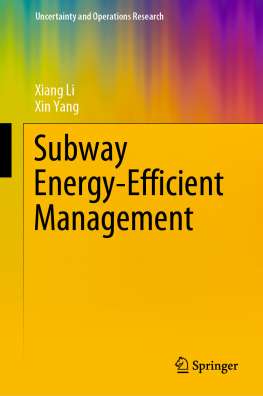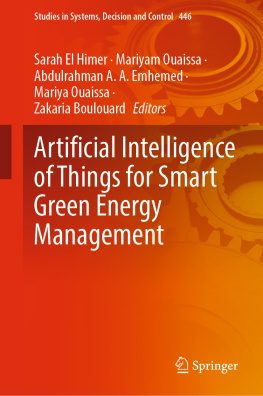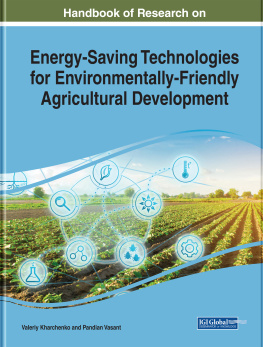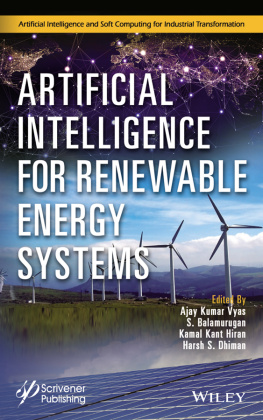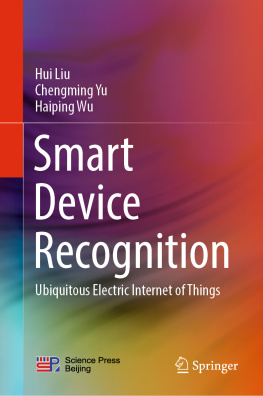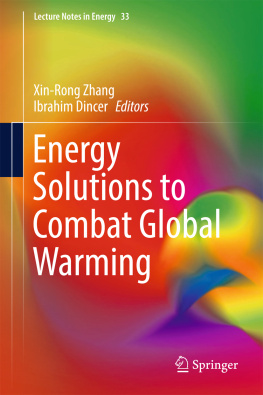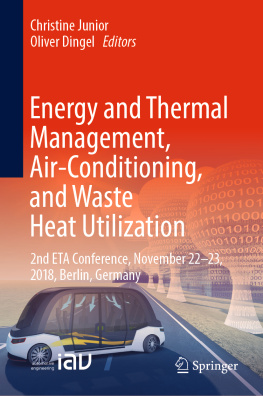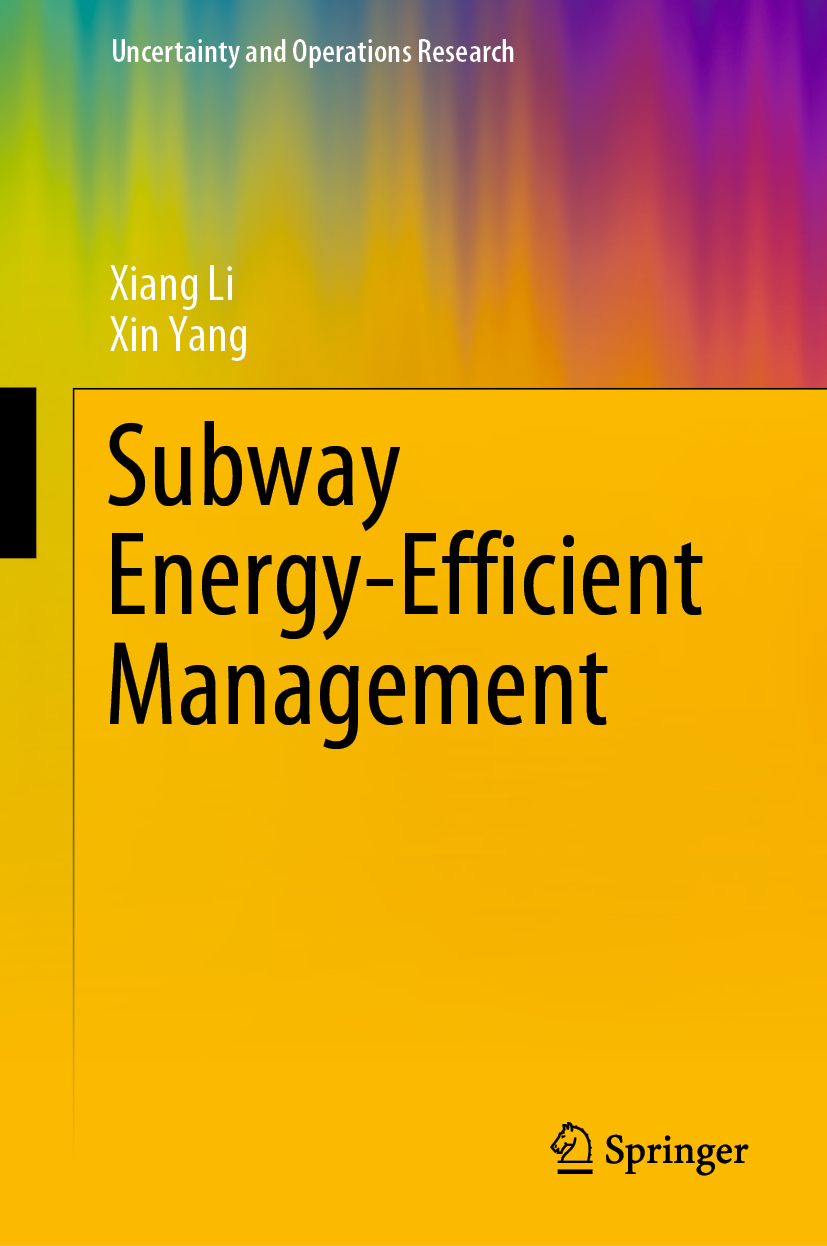Uncertainty and Operations Research
Editor-in-Chief
Xiang Li
Beijing University of Chemical Technology, Beijing, China
Series Editor
Xiaofeng Xu
Economics and Management School, China University of Petroleum, Qingdao, Shandong, China
Decision analysis based on uncertain data is natural in many real-world applications, and sometimes such an analysis is inevitable. In the past years, researchers have proposed many efficient operations research models and methods, which have been widely applied to real-life problems, such as finance, management, manufacturing, supply chain, transportation, among others. This book series aims to provide a global forum for advancing the analysis, understanding, development, and practice of uncertainty theory and operations research for solving economic, engineering, management, and social problems.
More information about this series at http://www.springer.com/series/11709
Xiang Li and Xin Yang
Subway Energy-Efficient Management
1st ed. 2020
Xiang Li
School of Economics and Management, Beijing University of Chemical Technology, Beijing, China
Xin Yang
State Key Laboratory of Rail Traffic Control and Safety, Beijing Jiaotong University, Beijing, China
ISSN 2195-996X e-ISSN 2195-9978
Uncertainty and Operations Research
ISBN 978-981-15-7784-0 e-ISBN 978-981-15-7785-7
https://doi.org/10.1007/978-981-15-7785-7
Springer Nature Singapore Pte Ltd. 2020
This work is subject to copyright. All rights are reserved by the Publisher, whether the whole or part of the material is concerned, specifically the rights of translation, reprinting, reuse of illustrations, recitation, broadcasting, reproduction on microfilms or in any other physical way, and transmission or information storage and retrieval, electronic adaptation, computer software, or by similar or dissimilar methodology now known or hereafter developed.
The use of general descriptive names, registered names, trademarks, service marks, etc. in this publication does not imply, even in the absence of a specific statement, that such names are exempt from the relevant protective laws and regulations and therefore free for general use.
The publisher, the authors and the editors are safe to assume that the advice and information in this book are believed to be true and accurate at the date of publication. Neither the publisher nor the authors or the editors give a warranty, expressed or implied, with respect to the material contained herein or for any errors or omissions that may have been made. The publisher remains neutral with regard to jurisdictional claims in published maps and institutional affiliations.
This Springer imprint is published by the registered company Springer Nature Singapore Pte Ltd.
The registered company address is: 152 Beach Road, #21-01/04 Gateway East, Singapore 189721, Singapore
Preface
Subway is an electric passenger railway, which is operated either in underground tunnels or on elevated rails. In the past decades, the subway has received rapid development in China due to its high capacity, punctuality, and reliability. Up to June 2019, there have been 39 cities opening 174 urban rail transit lines, among which Shanghai operates the largest subway network, and Beijing operates the busiest subway network in the world. On December 30, 2017, Beijing subway Yanfang line started operation, the first domestically developed automated subway in China.
For subway operations management, the optimal train control and scheduling methods have been extensively studied with various objectives, among which energy saving has attracted much attention from both researchers and practitioners on account of the rising energy prices and environmental concerns. The most popular energy-efficient management approaches include speed control and timetable optimization; the former is a type of commonly used methods while the latter is a class of emerging method, which respectively contribute to reducing traction energy consumption and improving regenerative energy absorption.
Speed control approach optimizes the time-speed profile for trains at inter-station to minimize traction energy consumption. The literature on energy-efficient speed control can date back to the 1960s. In 1968, Ishikawa proposed the first optimal train control model to determine the most energy-efficient speed profile. After that, both theoretical analyses and heuristic algorithms have been given, among which Howlett and his Scheduling and Control Group made extraordinary contributions to laying the foundation for energy-efficient speed control theory or energy-efficient operation theory.
Timetable optimization approach synchronizes the accelerating phases and braking phases of adjacent trains located in the same substation to maximize the regenerative energy absorption. Over the past years, a series of timetable optimization models have been formulated. For example, Ramos et al. (2007) first presented a timetabling problem that aims to maximize the overlapping time between accelerating actions and braking actions of adjacent trains, so that the accelerating trains can absorb the regenerative energy from braking trains as much as possible. In 2013, Li and Yang measured the regenerative energy absorption as the integral of the minimum profile between traction energy and regenerative energy at the overlapping time and formulated an energy-efficient timetabling model.
Essentially, timetable optimization and speed control are two closely related processes on energy saving. The timetabling process allocates the travel time among inter-stations, which significantly influences the traction energy consumption, while speed control process determines the accelerating time and braking time at inter-stations, which profoundly influences the regenerative energy absorption. Therefore, some researchers studied the integrated optimization on timetable and speed profile to minimize the net energy consumption, i.e., the difference between traction energy consumption and regenerative energy absorption. For example, Li and Lo (2014) proposed a mixed integer programming model and designed a genetic algorithm to minimize the net energy consumption, which integrally optimizes the accelerating time and braking time at inter-stations, dwell time, cycle time, and trip frequency. As extensions, the dynamic optimization methods and stochastic optimization methods on timetable and speed profile were also studied.
The purpose of this book is to provide a powerful tool to handle the subway energy-efficient management problems. It provides a comprehensive presentation on train timetable optimization and speed control models with the objective of energy saving. The methods presented here are designed for but not limited to the subway system. It can be extended and applied to the timetabling and speed control for high-speed trains and other types of passenger trains. The book is suitable for researchers, engineers, and students in the fields of transportation science, management science, and so on. The readers will learn numerous new modeling ideas on reducing traction energy consumption and improving regenerative energy absorption and find this work a useful reference.

